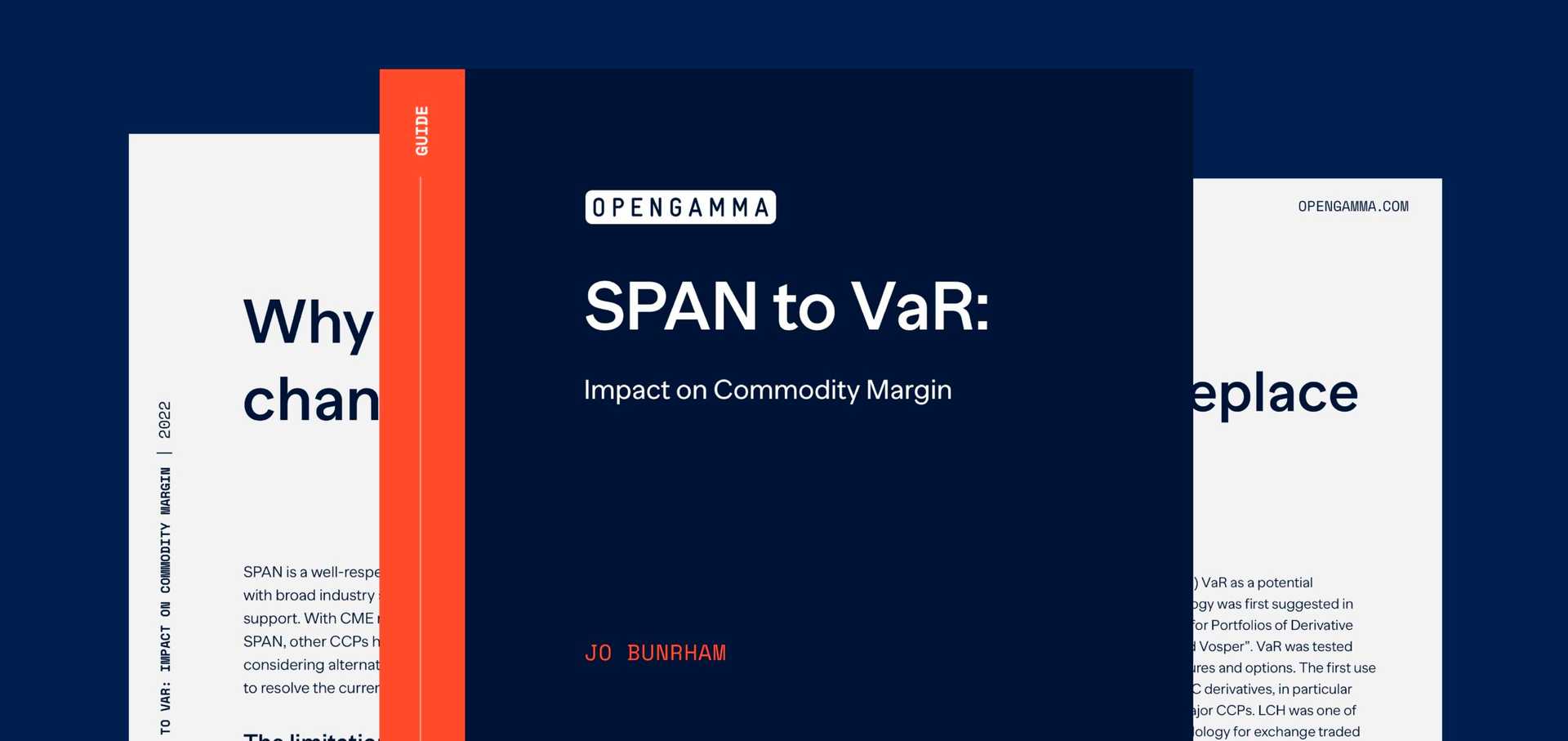If you trade futures and options you are probably aware of SPAN. It is the most widely used margin algorithm for ETD products, but it is reaching end of life.
Because of this, CCPs and Exchanges are moving away from SPAN to VaR-based methodologies for margin calculation, for example:
Eurex have already made the move with Prisma; launched in May 2013 and extended to all products by December 2017.
An LME project to make the move to VaR margin is well underway. LME Clear VAR margin
The advantage of using VaR is it removes the need for some of the complexity in SPAN, including:
- Intra contract spreads for spreads between expiries.
- Inter contract offsets for correlations between products.
Both of these are included implicitly within the VaR scenarios.
However, there are some key issues that arise from a move from SPAN to VaR that you need to be aware of, for instance:
- Not being able to simply estimate margin.
- Margin changing even though your position doesn’t.
In addition, whereas SPAN is a standard used across the industry, each CCP is developing their own version of a VaR margining algorithm. This creates a real challenge for anyone wanting to replicate the margin calculations and is probably beyond the resources of the majority of market participants.
Reasons for moving from SPAN
SPAN is a well-respected margin methodology with broad industry and regulatory support. However, CME (the authors of SPAN) are looking to move away from SPAN and are beginning to remove the support that they provide. This means that CCPs have needed to carefully consider alternatives, including how a new futures and options margin methodology could avoid any of the current issues with SPAN that cannot be rectified:
SPAN does not fully cover correlations between contracts.
For portfolios with large options positions, the limited number of scenarios in the scanning risk means that many risks are not correctly captured.
The number of intra-commodity and inter-commodity offsets has become burdensome for CCPs.
Over time SPAN has become increasingly complex as CCPs try to extend it to cover newer products and more sophisticated trading strategies.
Reasons for moving to VaR
The use of Filtered Historical Simulation Value at Risk (FHS VaR) as a potential replacement for SPAN as a margin methodology was first suggested in 1999 in the paper ‘VaR Without Correlations for Portfolios of Derivative Securities – Barone-Adesi, Giannopoulos and Vosper’.
The use of FHS VaR to replace SPAN was tested against various derivatives including bond futures and options. This initial work has since been extended by other CCPs as they developed their own algorithms, including changes made to ensure the resultant methodologies adhere to the latest regulation.
LCH were one of the first CCPs to use VaR as a margin methodology for exchange traded derivatives for the Nodal Exchange. Even before this they had been using LCH ERA, which is a VaR-like methodology, for calculating margin on cash equities. When NLX was launched in May 2013, LCH used their PAIRS algorithm, which had been developed for SwapClear, for margining the new futures and options exchange, and this has now been extended to cover Curve Global.
CME themselves are looking at replacing SPAN with a VaR based margin methodology, and already offer cross margining between their fixed income ETD products and Swaps using VaR. The use of VaR will be extended over time to cover all products.
Other CCPs are also looking to move to VaR. ICE have developed the MAPS methodology, and although the project has currently gone quiet, you can expect that it won’t be long before they start migrating their markets to this new methodology. And this will include all their products, covering fixed income, equity and commodity derivatives.
Similarly LME Clear are well underway with a project to replace SPAN, and will soon begin the process of moving to a VaR based margin methodology. And on the assumption that this is successful it could be extended to cover the whole HKEx group.
Perhaps the biggest move to VaR has been by Eurex with their implementation of Prisma. This is a single methodology that covers all their products, including OTC and exchange traded derivatives, as well as cross margining. They have successfully migrated all their customers from their old Risk Based Margin (a SPAN like algorithm) to the new methodology.
What are the technical differences between SPAN and VaR?
The main component of SPAN margin is the scanning loss. This takes a fixed set of 16 scenarios looking at moves in future prices and option volatilities, calculating a worst case loss for these scenarios.
The scanning loss assumes that prices for all expiries move in tandem, for example that the June and September expiries for a given STIR future will both move up by 25 basis points. But this is not generally the case, with some expiries being more impacted by market moves than others. To compensate for this, SPAN includes intra contract spreads that calculate potential additional losses based on calendar spreads.
Similarly, the scanning loss does not take into account any correlation between products. To account for this, SPAN includes inter contract offsets, giving percentage savings on the margin calculated for each product within the spread.
VaR margin replaces all three of these components with a single calculation. Instead of 16 scenarios there are maybe 1,000 historic scenarios. Each of these scenarios implicitly includes correlations between expiries and different products, hence no need for any intra or inter contract add-ons.
VaR should be more accurate than SPAN in calculating potential future losses; the intra spreads need to be set at the largest spread that can occur between expiries and the inter offsets need to assume the worst case when determining the saving allowed. Which generally means that margins will be lower. But this potential saving comes at a cost. There is no longer a simple way to estimate margins. And to make matters worse the margin is more volatile under VaR compared with SPAN.




